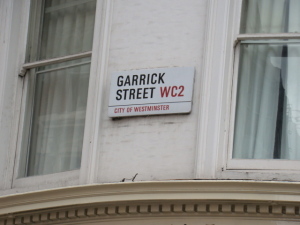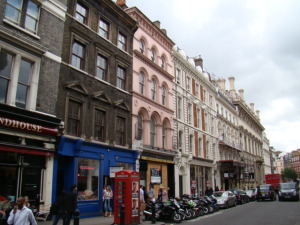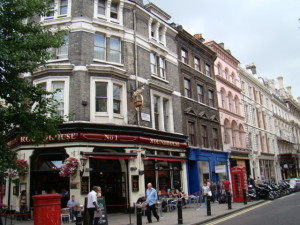Posted: March 9th, 2015 | No Comments »
Jacques M Downs’s history of the American’s at Canton and their own little bit of dope dealing (which, let’s be honest, they like to overlook and forget now and again!) is now reissued by Hong Kong University Press….
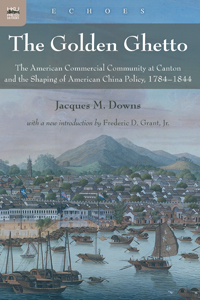
Before the opening of the treaty ports in the 1840s, Canton was the only Chinese port where foreign merchants were allowed to trade. The Golden Ghetto takes us into the world of one of this city’s most important foreign communities–the Americans–during the decades between the American Revolution of 1776 and the signing of the Sino-US Treaty of Wanghia in 1844. American merchants lived in isolation from Chinese society in sybaritic, albeit usually celibate luxury. Making use of exhaustive research, Downs provides an especially clear explanation of the Canton commercial setting generally and of the role of American merchants. Many of these men made fortunes and returned home to become important figures in the rapidly developing United States. The book devotes particular attention to the biographical details of the principal American traders, the leading American firms, and their operations in Canton and the United States. Opium smuggling receives special emphasis, as does the important topic of early diplomatic relations between the United States and China.Since its first publication in 1997, The Golden Ghetto has been recognized as the leading work on Americans trading at Canton. Long out of print, this new edition makes this key work again available, both to scholars and a wider readership.
Posted: March 8th, 2015 | 3 Comments »
RASÂ LECTUREÂ Â
Tuesday 10 March 2015
7:00 PM for 7:15 PM start
Radisson Blu Plaza Xingguo Hotel, Tavern Bar
78 XingGuo Road, Shanghai
VINCE UNGVARYÂ ON
“West Meets East –
The Jesuits and the Mapping of China – 16C-18C”

Jesuit missionaries had begun to visit and live in China since the mid 1500’s. While their missions where primarily to spread Christianity, it was their advanced knowledge of Science, Mathematics, Astronomy & Cartography that was seen as valuable to the Chinese Court and learned classes. Thus using cartographic media, these Jesuits both recorded China via ‘western style’ maps to pass knowledge to Europe, and showed Chinese Emperors and high officials maps of the world which they had never seen before. A fascinating story of the early interactions between East & West.
Vince Ungvary is a professional antique map dealer who has been collecting antique maps of China & Asia for the past 20+ years and is a member of the International Map Collectors Society (IMCOS). Vince will also be displaying a wide range beautiful museum-grade, original antique maps of China and Asia, some from the Jesuits in the mid 1600’s. All antique maps displayed will be available for purchase along with a Certificate of Authenticity.
Talk Cost: RMB 70.00 (RAS members) and RMB 100.00 (non-members). Includes glass of wine or soft drink. Those unable to make the donation but wishing to attend may contact us for exemption.
Membership applications and membership renewals will be available at this event. Those unable to make the donation but wishing to attend may contact us for exemption.
RAS Monographs: Series 1 & 2 will be available for sale at this event. RMB 100 each (cash sale only).
To RSVP:Â Please “Reply” to this email or write to
RAS Bookings at: bookings@royalasiaticsociety.org.cn
Posted: March 7th, 2015 | No Comments »
A post that is, rather longwindedly perhaps of interest to China Rhymers. Trent Park is a Grade II listed mansion that now sits in the Trent Country Park in the north London borough of Enfield (where I happen to come from – the borough not the mansion you understand). The building was for many years part of Middlesex University and in WW2 was a POW camp for German officers (mostly Luftwaffe pilots captured during the Battle for Britain and their rooms had hidden microphones so we could listen in on them). It is a beautiful building, in good condition (at least the exterior is and, the last time I was there, the interior was in pretty good condition too) and surrounded by nice grounds and an orangery. there used to be a lovely outdoor swimming pool which I used once but not sure if that is still there. However, the current owners are in liquidation and the future of the site is uncertain. There is a campaign to preserve the building and you can sign a petition to ensure that the London Borough of Enfield does so here.
And so here is the longwinded link to China:
In 1909 the estate was sold to Sir Philip Sassoon who entertained the likes of Chaplin and Churchill at the mansion;
Sir Philip’s cousin was Siegfried Sassoon, the war poet;
Sir Philip was the son of Sir Edward Albert Sassoon, himself the son of David Sassoon, best associated with the Sassoon’s trading empire in India;
Sir Victor Sassoon was a cousin and he of course went to Shanghai and did rather well for himself.
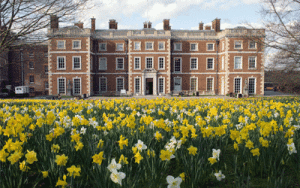 Trent Park as it is today
Trent Park as it is today

 The Orangery and swimming pool (where I once took a summer dip)
The Orangery and swimming pool (where I once took a summer dip)

Trent Park surrounded by barbed wire and guards when it was a POW camp in WW2
Posted: March 6th, 2015 | No Comments »
After mentioning Maurice Dekobra’s 1943 novel Shanghai Honeymoon (Lune de miel à Shanghaï in the original French) yesterday I feel a little more is deserved. The novel was first published in English in 1946. It wasn’t that well received by reviewers (“standard” seems the most commonly used description) despite one admitting that “Maurice Dekobra knows all the Shanghai gestures, native and foreign”, though I reckon it’s worth a read for a number of reasons. It certainly captures the moment of the Solitary Island and the desperation of those sojourners stuck in the city while also providing an excellent portrait of the varied international community and the nightclub scene – the Topaze nightclub in the book is probably based on Dekobra’s own experiences in Shanghai, and most probably in Sir Victor Sassoon’s Ciro’s nightclub. It is also a reasonably light novel that becomes progressively darker and ends in Bridge House with the barbarity of the Japanese invasion of the International Settlement. It neatly encapsulates the idea of Shanghai as a place to reinvent yourself, escape bad starts in life and troublesome pasts though perhaps overdoes this a tad. Still, it has been rather overlooked and, while it’s no Malraux, it is better than most of the contemporary portrayals of the city I’ve read (and that’s probably most of them to be honest!).
For the interested I’ve blogged previously on Dekobra’s China-related work here, here and here




Posted: March 5th, 2015 | No Comments »
A small addition to my recent post on the Forbidden City nightclub in San Francisco a while back. Reading Maurice Dekobra’s (who I’ve blogged about multiple times on this site – use the search box to see) 1946 novel Shanghai Honeymoon (which I’ll blog about in more detail soon) the club pops up and we can assume that if he didn’t visit then he had certainly heard of it. Speaking of a certain Madame Flora Ying at a party in Shanghai Dekobra writes that she was not discovered on the Tartar City of Peking nor the Flower Boats of Canton but rather, and remembering Dekobra was a sophisticated Parisian and habitue of Montmatre and so a little scornful of American vaudeville entertainment:
“He had found Madame Flora Ying quite simply in a nightclub on Sutter Street, San Francisco, the Forbidden City, where half a dozen Chinese girls had been engaged to amuse touriosts by singing vulgar sailors’ songs with their own perculirar stylized gestures. Mlle Flora Ying put on a special act. She undressed in an extremely narrow golden cage. Although her act held some of the glamour of the Orient, it was not, in fact, unlike the typical striptyease performance of a New York show of the kind which invariably attracts curious youngsters, hungry eyed bachelors and blase widowers, and where for a dollar the audience may feast its eyes upon some ravishing beauty in evening gown nonchanalantly shedding her garments to the strains of a Strauss waltz.”
There’s a lot more on the Forbidden City here
Posted: March 4th, 2015 | No Comments »
Ronald Knapp and Chester Ong’s Chinese Houses of Southeast Asia looks at the architectural legacy of Chinese migrants across the region…..

The migration of the Chinese from southern China to Southeast Asia created one of the world s great cultural diasporas. Many of these migrants and their descendants became successful and built architecturally unique homes shophouses, bungalows, villas, and mansions combining Chinese, European, and local influences. The story of these hybrid architectural forms is the main focus of this book. While most of these houses are now disappearing, some fine examples remain scattered throughout Indonesia, Malaysia, the Philippines, Singapore, Thailand, and Vietnam. Over a period of several years Ronald G. Knapp and photographer A. Chester Ong travelled across the region in search of overseas Chinese heritage homes. Chinese Houses of Southeast Asia is the result of their researches. This book provides a fascinating portrayal of the historical circumstances of the Chinese in the region through essays, historic photographs, paintings, and line drawings. Nearly forty elegant residences dating from the late eighteenth to the early twentieth century are presented and form the core of this book. Each residence is depicted in stunning color photographs along with background information about the families who built and lived in them. These accounts reveal the entrepreneurial spirit of the Chinese as well as their social and economic circumstances. Images and drawings from China help clarify the cultural influences from that region, and in a few cases similar and even closely-related residences in China are also presented.
Posted: March 3rd, 2015 | No Comments »
Just having rewatched Alfred Hitchcock’s wartime thriller Lifeboat (1944), with a script by John Steinbeck, I noticed a few China references that would have meant more to an audience then than perhaps now. Sunk by a U-boat on the way to New York, a cast of random Brits and Americans are stuck together until they are rescued. Tallulah Bankhead plays Connie Porter, a woman modelled on Martha Gellhorn I suppose who has been in China – getting sunk apparently, “Reminds me of an air raid once that hit me in Chunking.”
Also on board is Charles D “Ritt’ Rittenhouse (played by Henry Hull) who ruminates that when this war is over he’s going to get back into business selling to China – they’ve got a market of 400 million Chinese over there just waiting for western products – clearly a man who’d read (as it seems Steinbeck might well have) Carl Crow’s recently published 400 Million Customers….
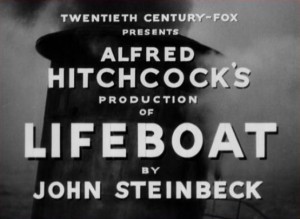
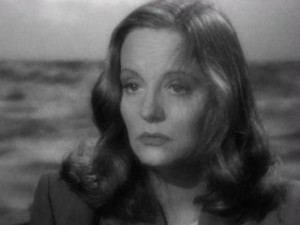
Posted: March 2nd, 2015 | 1 Comment »
Scoones crammer school is a much underwritten about place that constantly crops up in memoirs. As most memoirists choose not to go into much detail about the place I can only assume that, in the late nineteenth century, it was a well known institution.
Anyway, here’s a bit of background. Scoones was a crammer for those seeking to enter service in the Foreign Office. It was located at Garrick Chambers on Garrick Street near Covent Garden and next door to the Garrick Club. I first came across it when researching the background of Pamela Werner’s adoptive father ETC Werner, who crammed at the school in the 1880s and passed the Foreign Office entrance exams for a Far Eastern Cadetship and was subsequently sent to Peking as a student interpreter for two years. I had also known that Werner was acquainted with the Africa Hand and writer H. Rider Haggard but was not quite clear on how the two met, given that Haggard never visited China and (though his sister was an early Africa hand at London University) Werner had never visited Africa. Recently happening to glance through Rider Haggard’s autobiography The Days of My Life (Volume 1, published 1926) I noticed that Haggard had also attended Scoones (though dropped out and went to Africa before taking his final exams) and claimed that he made many friends for life. Werner must clearly have been one of these as Haggard later seconded Werner for membership of the Athenaeum Club in London. Incidentally Haggard also recalls having attended séances and spiritualist meetings with other Scoones’ students in St James’s and Hanover Square – both Werner and Haggard retained lifelong interests in séances and spiritualism. As much as their backgrounds at good school (Werner at Tonbridge and Haggard at Ipswich Grammar) being a Scoones graduate provided networks that survived and helped each other for decades within the FO.
Back to Scoones – it was run by William Baptiste Scoones, who was known for getting even the worst dullards through the FO exams and into postings. The curriculum was overseen by André Turquet (1869-1940), the French-born director of Scoones. Many of Scoones “crack team†of teachers were well known too – for instance John Churton Collins, taught Latin at Scoones by day and wrote scathing reviews of literature for the Quarterly Review by night. Apparently though the pay was not good and Collins, like other employees, recalled existing on the poverty line. It’s a little confusing but I think, sometime in the early twentieth century the crammer was taken over by a Mr Diptitch Scoones, perhaps the son of William Baptiste.
One candidate recalled than in 1893 he was told that all but one of the successful FO candidates had attended Scoones. At Scoones pupils (usually arriving when 18) were tutored hard in recommended texts for the entrance exam including Smith’s Wealth of Nations, Mill’s Principles of Political Economy as well as German, French and Latin and how to answer the infamous “Catch†questions that the FO examiners famously set. The pupils were reasonably well off – often second sons with an annual income (required by the FO and on top of Mr Scoones apparently not inconsiderable fees and London lodging fees for the duration of their studies) and lived rather wild lives with drinks at The Fielding Club, regular trips to the Gaiety and Savoy theatres as well as indulging in séances!
Afraid I don’t know much more about SCoones, except that a large number of those men who entered the China section of the Foreign Office and served decades in China (like ETC Werner) must have passed through Mr Scoones’s establishment on Garrick Street. I rather think it deserves a book….

Andre Turquet – Director Scoones (I think!)
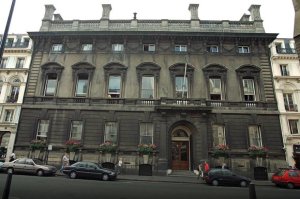
The Garrick Club
And Garrick Street today…
